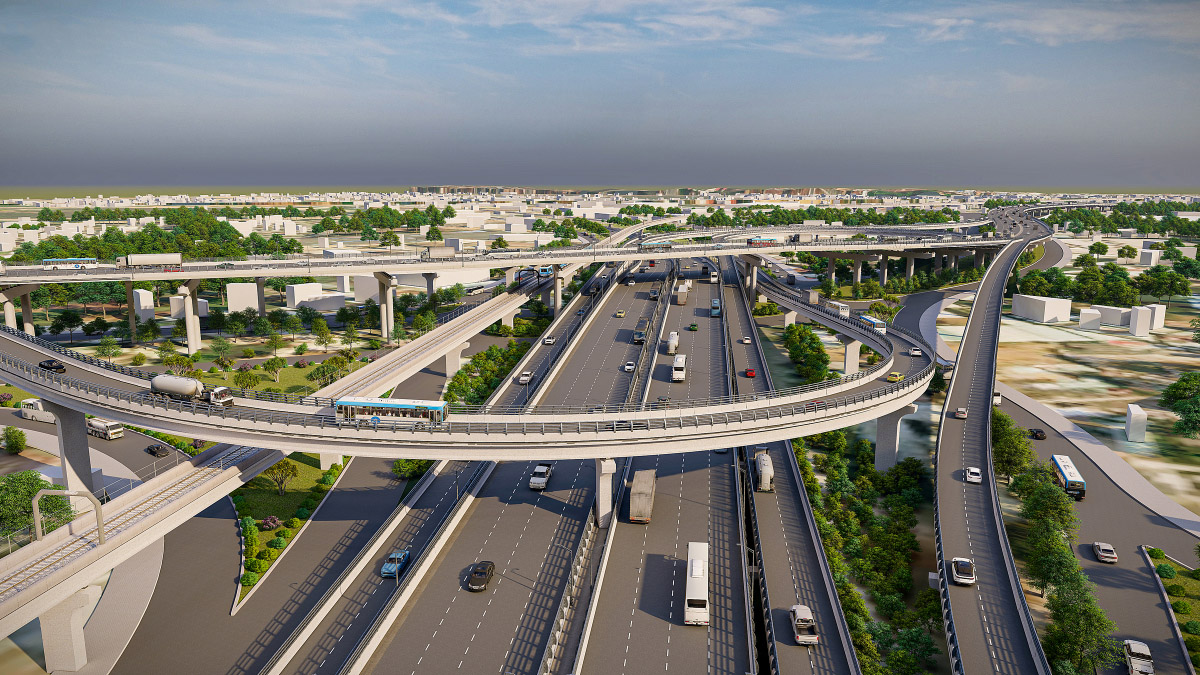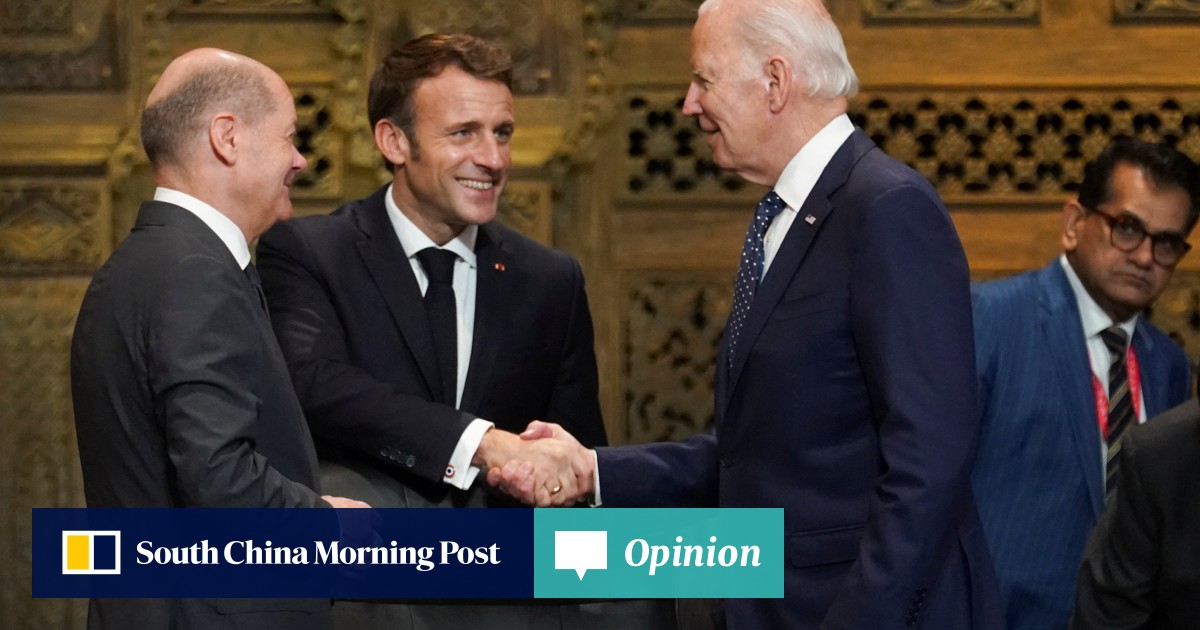Trump's End-of-Term Goal: A Nationwide Missile Defense System

Table of Contents
The Proposed System: Scope and Technology
The Trump administration's vision for a nationwide missile defense system involves a layered approach, combining ground-based interceptors, sea-based systems, and potentially, space-based assets. This multi-layered defense aims to intercept ballistic missiles at various stages of their flight, from boost phase to terminal phase. The technological feasibility of such a comprehensive system, however, remains a significant point of contention.
While existing technologies, such as the Terminal High Altitude Area Defense (THAAD) system, Aegis Ashore ballistic missile defense system, and ground-based interceptors (GBI) at Fort Greely, Alaska, form the backbone of current missile defense capabilities, a nationwide system requires significant advancements. The current systems are not without limitations, particularly against hypersonic weapons and sophisticated countermeasures.
- Specific technologies involved: THAAD, Aegis Ashore, Ground-Based Interceptors (GBI), potentially space-based lasers or kinetic kill vehicles.
- Technological advancements needed: Improved sensors for early warning and target tracking, hypersonic missile defense capabilities, enhanced interceptor technology to overcome countermeasures.
- Comparison to existing systems: While Israel's Iron Dome provides effective short-range protection, a nationwide US system would need to address a far broader range of threats and distances.
Economic Considerations: Funding and Budgetary Implications
The cost of constructing and maintaining a nationwide missile defense system is astronomical. Estimates range from hundreds of billions to potentially trillions of dollars over several decades, depending on the scope and technological advancements required. Funding sources would likely involve substantial increases in government spending, potentially diverting resources from other critical national priorities such as healthcare, education, or infrastructure. Private sector investment and international partnerships might play a supporting role but are unlikely to cover the majority of the costs.
- Breakdown of costs: Research and development, procurement of new systems, deployment infrastructure, operational maintenance, personnel training, and ongoing upgrades.
- Budgetary allocation: A nationwide missile defense system would require significant budget reallocation, potentially leading to cuts in other essential programs.
- Potential economic benefits: While the project would create jobs in the defense industry and stimulate technological advancements, the overall economic impact requires careful evaluation, weighing the costs against the potential benefits.
Geopolitical Ramifications: International Relations and Arms Race
The deployment of a nationwide missile defense system would undoubtedly have profound geopolitical implications. Russia and China, both possessing significant ballistic missile capabilities, might view such a system as a direct threat, potentially leading to an escalation of tensions and a new arms race. This could disrupt existing strategic alliances and jeopardize arms control agreements, such as the New START treaty.
- Potential responses from other nuclear powers: Increased military spending, development of more advanced weapons systems to overcome the defense, and potential retaliatory measures.
- Impact on existing strategic alliances: Strained relationships with allies who perceive the system as destabilizing or a threat to their security interests.
- Implications for international treaties and arms control: Potential withdrawal from or renegotiation of existing agreements, leading to a less stable international security environment.
Feasibility and Challenges: Technological and Political Hurdles
The technical challenges associated with deploying a truly effective nationwide missile defense system are immense. Perfecting the technology to intercept all types of ballistic missiles, including hypersonic weapons, remains a significant hurdle. Beyond the technological challenges, the project faces significant political obstacles. Securing Congressional approval for the massive funding required, navigating public opinion, and addressing potential international criticism will be crucial for success.
- Limitations of current technology: Inability to reliably intercept all types of missiles, vulnerability to countermeasures, and limitations in early warning systems.
- Political obstacles: Congressional opposition based on cost and potential geopolitical ramifications, public skepticism about the effectiveness and cost of the system.
- Unforeseen challenges: Unexpected technological setbacks, escalating international tensions, and the emergence of new and unforeseen threats.
Conclusion: Assessing the Legacy of Trump's Nationwide Missile Defense System
Trump's proposed nationwide missile defense system presents a complex challenge with significant technological, economic, and geopolitical ramifications. The feasibility of building such a system, given current technological limitations and potential budgetary constraints, remains questionable. The potential for escalating an arms race and straining international relations adds further complexity. Careful consideration of these challenges is crucial before embarking on such a costly and potentially destabilizing endeavor.
We need further discussion and critical analysis of the proposed nationwide missile defense system and its potential long-term effects on national security. Research the project further and engage in informed discussions about this critical aspect of national defense strategy. The future of our national security depends on a thoughtful and comprehensive approach to missile defense.

Featured Posts
-
 Bbc Antiques Roadshow Leads To Arrest Of American Couple In The Uk
May 22, 2025
Bbc Antiques Roadshow Leads To Arrest Of American Couple In The Uk
May 22, 2025 -
 Steelers Intense Interest In Nfl Draft Quarterbacks
May 22, 2025
Steelers Intense Interest In Nfl Draft Quarterbacks
May 22, 2025 -
 Ket Noi Tp Hcm Binh Duong Danh Gia Tac Dong Cua Cac Du An Ha Tang
May 22, 2025
Ket Noi Tp Hcm Binh Duong Danh Gia Tac Dong Cua Cac Du An Ha Tang
May 22, 2025 -
 Blake Lively Allegedly Blackmailed Taylor Swift Details Of The Leaked Text Controversy
May 22, 2025
Blake Lively Allegedly Blackmailed Taylor Swift Details Of The Leaked Text Controversy
May 22, 2025 -
 Macrons Push For European Economic Independence From Us Imports
May 22, 2025
Macrons Push For European Economic Independence From Us Imports
May 22, 2025
